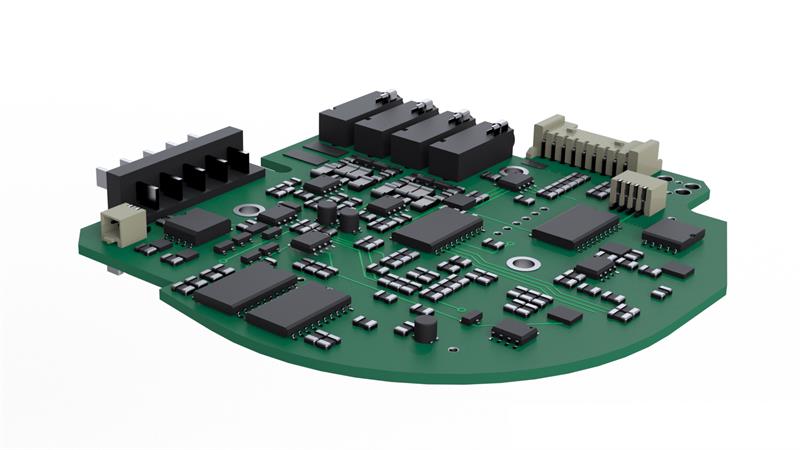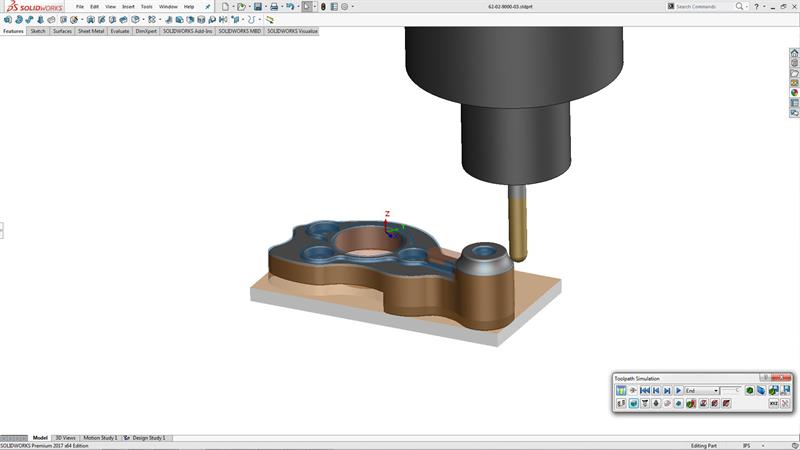So what does it all mean? From a design engineer’s perspective, there seems to be a shift in emphasis. For example, a piece of industrial equipment containing a critical bearing might be designed to last 10 to 15 years. However, instead of analysing a failed unit to better understand why it has broken – and improve the next round of designs – historical through-life operation and maintenance data can all be easily accessed and analysed. So, rather than basing a whole load of design assumptions on a snapshot – i.e. the remnants of a failed bearing unit – detailed through-life data can be the basis of further design iteration. And designers don’t have to wait until end of life to make assessments – detailed real-world, real-time data can be continuously accessed on any, and all, Industry 4.0 connected components.
Design 4.0
Typically, design for Industry 4.0 requires an integrated and systemic cross-discipline approach that traditionally goes well beyond the remit of mechanical, electronic or software engineers. Engineering activities can no longer be carried out on their own. IT, once treated as a support department, is increasingly becoming a vital part at the front end of successful Industry 4.0 projects.
Lou Feinstein, senior manager for IoT (Internet of Things) strategy at Solidworks, explains the convergence. He says: "We have broken IoT down into two pieces – the design of things and the management of things."
Feinstein is quick to stress that Industry 4.0 as a concept should not be thought of as simply a product, but rather an ecosystem of connected products that are continuously recording, sharing and analysing data. And this is having an impact on how design software companies are developing their products. They too, can no longer work alone, and Solidworks for one is increasingly looking to form a number of key technology partners.
Platform engineering
What essentially defines Industry 4.0 is the connectivity of products and the acquisition of data, which can be utilised to aid efficiency and add value to a process, product or system. While hardware design might actually remain reasonably similar, it is the software platform that is enabling much of the innovation and value to be realised.
 "The platform could be the Dassault Systeme’s 3D Experience platform, but it could also come from Microsoft or Rockwell," says Feinstein. "What we are going to do is leverage our partner network to provide some of the best IoT solutions out there, but we are also making some integrations that allow designers to start off in the MCAD world or even the ECAD world, and move forward."
"The platform could be the Dassault Systeme’s 3D Experience platform, but it could also come from Microsoft or Rockwell," says Feinstein. "What we are going to do is leverage our partner network to provide some of the best IoT solutions out there, but we are also making some integrations that allow designers to start off in the MCAD world or even the ECAD world, and move forward."
The use of a ‘Platform’ is likely to become more prevalent as Industry 4.0 develops. Platform design allows the development and deployment of software applications to monitor, manage,
and control connected devices. It also allows data collection, provides security, manages sensors and integrates with third party systems.
It is no surprise that many involved in Industry 4.0 technologies are developing, or backing, a particular platform to take forward. A recent announcement by fellow software giant PTC saw it, along with Deloitte Digital – a self-styled creative digital consultancy – roll out plans to accelerate the adoption of the ‘ecosystem’ concept using its ThingWorx industrial IoT platform.
The duo is co-creating ‘industry-focused solutions’ to enable engineering communities to not just incorporate IoT as a philosophy within product development, but to more easily extract value from it.
Their initial IoT solutions are designed to help transform industrial operations within manufacturing, oil and gas, and power and utilities, with the primary focus on the rapid deployment of condition-based monitoring, predictive maintenance, digital supply networks, and connected factory solutions. Additional focus areas will include retail and consumer products, healthcare, life sciences, and smart cities.
Robert Schmid, chief IoT technologist at Deloitte Digital, says: "The ThingWorx platform from PTC enables our teams to rapidly connect machines, devices, and sensors to form insights and corresponding actions that can deliver value and ROI in weeks, not months or years."
Secure software
One of the concerns that the Industry 4.0 debate continually raises is that of security. Most software companies will build this into their own secure stack. However, the Solidworks’ design environment goes right back to electronics, a new trend that is emerging according to Feinstein.
He says: "We are putting the software and security in the semiconductor chips themselves, so instead of having your security
stack inside software, it will be part of the semiconductor. It will be a whole different way of doing your security."
Some of the partnerships Solidworks is looking at involve going as deep as Real Time Operating Systems that sit on semiconductors.
"Our ECAD solutions will be a pivot point," says Feinstein. "We’ll be able to work out where to put the semiconductor, if we can programme the semiconductor and so forth. It really allows us to do everything that we need except for the embedded software."
| Increasing design for manufacture A connection in the Industry 4.0 loop is that between design and manufacture. Much has been made of the possibilities that 3D printing can offer, allowing the production of parts that could not have been made by traditional machines or moulding methods. There is, however, still an important link from design to production and Solidworks CAM was announced at Solidworks World earlier this year to ensure this link is as productive as possible. Solidworks CAM is a 2.5-axis milling and turning solution that is powered by another partner, CAMWorks. Mike Buchli, senior product manager at SolidWorks, says: "Having integrated CAM capabilities is becoming more important than ever; especially when efficiency is involved. For example, users want to be able to check their components for manufacturability earlier in the design process. Integrated CAM also allows for the automatic updating of tool paths because the CAM system can read changes as you make updates to parts." |












